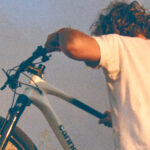Out on the open road, the roar of engines and wind can easily drown out voices, making verbal communication a challenge for motorcycle riders. That’s where Biker Hand Signals come into play. These universally recognized gestures are a time-tested communication method, ensuring everyone in your riding group stays informed and safe.
While you might be familiar with a few basic signals, effective group riding requires a broader understanding of these visual cues. This guide will walk you through essential hand signals every rider should know to navigate group rides safely and confidently.
Essential Motorcycle Hand Signals: The Basics
These fundamental biker hand signals are widely understood and form the backbone of group communication. The lead rider typically initiates these signals to guide the group’s pace and direction.
Signaling a Left Turn
 Hand signal for left turn on a motorcycle
Hand signal for left turn on a motorcycle
To indicate a left turn, extend your left arm straight out to the side, with your palm facing flat. This clear signal is easily visible to riders behind you. This extended arm can also serve as a backup indicator if your motorcycle’s turn signals malfunction.
Signaling a Right Turn
 Motorcycle hand signal for right turn indication
Motorcycle hand signal for right turn indication
Signaling a right turn is performed with the left arm for safety reasons. Removing the right hand from the handlebar could compromise control, especially braking. Instead, extend your left arm at a 90-degree angle upwards, keeping a closed fist. This distinct signal clearly communicates a right turn intention.
Signal to Speed Up
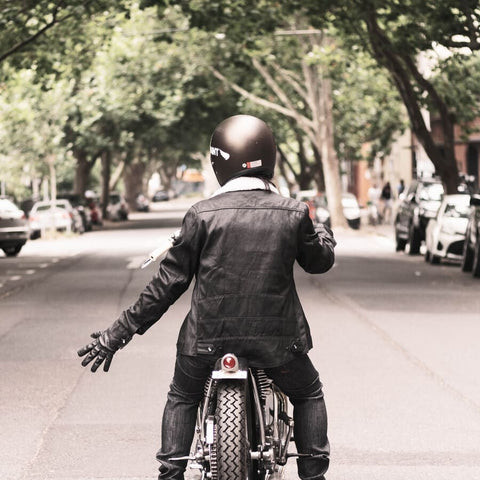 Hand signal to request speeding up for motorcycle riders
Hand signal to request speeding up for motorcycle riders
To signal the group to speed up, extend your left arm straight out, palm facing upwards. Then, make upward swinging motions with your arm. This gesture clearly conveys the need to increase speed.
Signal to Slow Down
Slowing down the group is signaled by the opposite motion of speeding up. Extend your left arm straight out, but this time with your palm facing downwards. Swing your arm downwards in a controlled motion to indicate that riders need to decrease their speed.
The Biker Wave: Acknowledging Fellow Riders
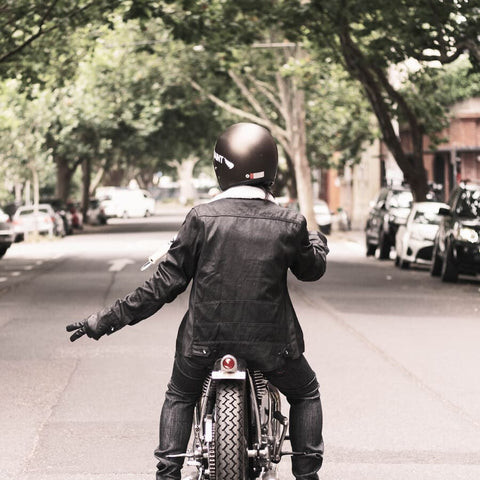 The iconic biker wave hand signal
The iconic biker wave hand signal
While not strictly a safety signal, the biker wave is a gesture of camaraderie among riders. When passing fellow motorcyclists, extending two fingers downwards is a friendly way of saying “hello” and acknowledging the shared passion of riding. It reinforces the sense of community within the motorcycling world.
Motorcycle Hand Signals for Rider Courtesy and Safety
Beyond the basics, these hand signals enhance rider courtesy and address potential hazards or needs within the group.
“Cops Ahead” Warning Signal
 Motorcyclist using hand signal to warn of police ahead
Motorcyclist using hand signal to warn of police ahead
If you spot law enforcement ahead, alerting your group is a courteous heads-up. Simply tap the top of your helmet with your palm. This universally understood signal warns riders behind to be mindful of their speed and behavior. This signal is often extended to riders outside your group, reflecting the supportive nature of the motorcycle community.
Signaling a Forgotten Turn Signal
If you notice a rider ahead with their turn signal still flashing after a turn, point at your own indicator and then point towards the rider, or make a repeated opening and closing fist motion. This indicates they may have left their signal on inadvertently. Extending this courtesy to fellow riders promotes safety and awareness on the road.
The “Drop Off” System Signal
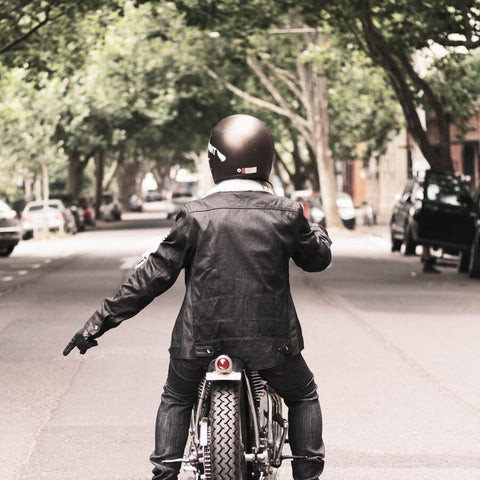 Motorcycle hand signal for drop off system in group riding
Motorcycle hand signal for drop off system in group riding
In group rides, maintaining cohesion is crucial, especially at turns. The “drop off” system prevents group separation. The lead rider points to a safe spot on the side of the road, signaling the rider behind them to stop and direct the rest of the group at an upcoming turn. This ensures everyone stays on course.
Danger Ahead Hazard Signal
Similar to the “drop off” signal, pointing to a hazard is indicated by pointing with your index finger towards the left side of the road for left-side dangers, or pointing with your right foot for hazards on the right. This clear directional signal alerts riders to potential road hazards like potholes, debris, or animals.
Signal to Pull Over at the Next Junction
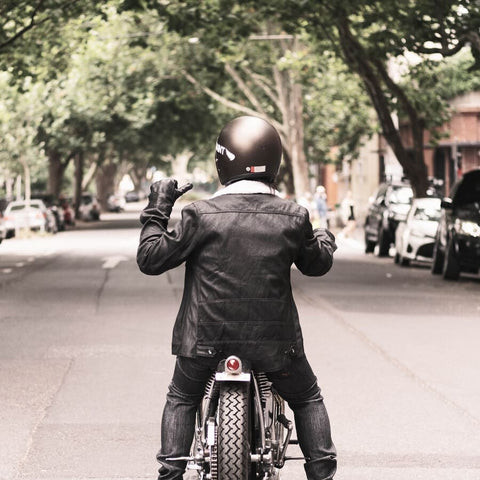 Motorcyclist signaling to pull off at the next junction for a break
Motorcyclist signaling to pull off at the next junction for a break
When the lead rider decides it’s time for a break, they signal the group to pull over at the next available safe spot. This is indicated by pointing a thumb towards the head, signaling a rest stop is needed.
“Turn Signal On” Reminder
Before an upcoming turn, the lead rider might extend their left arm and open and close their hand repeatedly. This is a reminder for riders to activate their turn signals, ensuring visibility and clear communication of intentions to other motorists and riders in the group.
“Follow Me” Signal
To clearly indicate “follow me,” extend your left arm straight up in the air, palm facing forward, like a stationary wave. This unambiguous signal directs the group to continue following the lead rider, especially useful in complex intersections or unclear routes.
Common Group Ride Stop Signals
Group rides often require planned or unplanned stops. Specific hand signals communicate the reason for stopping, ensuring clarity within the group.
Need Fuel Stop Signal
Running low on fuel requires a stop. To signal “need fuel,” simply point to your fuel tank with your left index finger. This direct and easily understood signal communicates the need for a gas stop to the group.
General Stop Signal
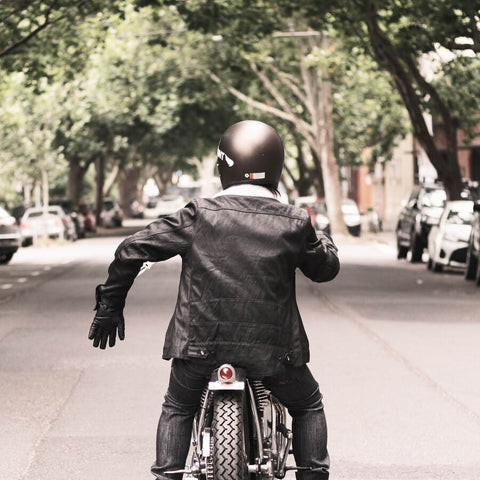 Motorcycle hand signal for requesting a stop during group ride
Motorcycle hand signal for requesting a stop during group ride
When a stop is needed for any unspecified reason, use the general stop signal. Bend your left arm at a 90-degree angle upwards, with your palm facing backward towards the riders behind you, displaying an open palm. This distinct signal quickly communicates the need to pull over.
Comfort Stop Signal
The “comfort stop” signal, indicating a need for a restroom break, is communicated by making a clenched fist and moving it up and down. While sometimes eliciting amusement, this is a universally recognized signal for a comfort break among riders.
Refreshment Stop Signal
 Motorcyclist signaling for a refreshment stop during a ride
Motorcyclist signaling for a refreshment stop during a ride
Signaling a need for a refreshment break is intuitive. Mimic bringing food or drink to your mouth by putting your thumb up and towards your mouth or helmet. This clearly communicates the desire to stop for food or drinks.
Less Common, Yet Useful Hand Signals for Bikers
Expanding your hand signal vocabulary with these less common signals can prove beneficial in specific situations.
“Pull Off Freeway” Signal
 Motorcyclist signaling to pull off the freeway or highway
Motorcyclist signaling to pull off the freeway or highway
When riding on a freeway or highway and the lead rider needs to exit, the “pull off” signal is used. Point your left index finger straight up to the sky, then hook it to the right, over your head. This indicates the intention to take the next exit. This signal is distinct from refreshment stops, indicating a more significant reason to pull over.
“Come” or “Follow” Closer Signal
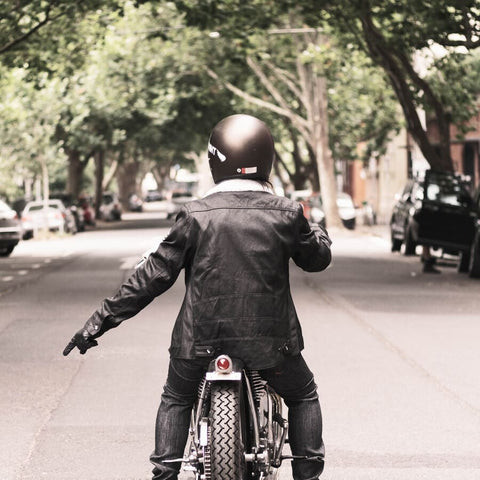 Motorcyclist signaling to come closer or follow
Motorcyclist signaling to come closer or follow
To signal riders to come closer or follow more closely, extend your arm at a 45-degree angle, pointing upwards, then bring your finger down to point at the ground. Repeat this motion to reinforce the “come” or “follow” instruction.
Single File Formation Signal
 Biker signaling group to ride in single file formation
Biker signaling group to ride in single file formation
When the road ahead narrows or conditions require tighter formation, the “single file” signal is used. Raise one finger straight up in the air, indicating that riders should form a single line.
Double File Formation Signal
To signal a return to double file formation when conditions permit, the lead rider will raise two fingers. This indicates that it is safe to ride side-by-side again, offering more relaxed group riding when appropriate.
Mastering these biker hand signals is essential for safe and enjoyable group motorcycle rides. Practice these signals with your riding buddies before hitting the road to ensure clear communication and a smoother, safer riding experience for everyone.

